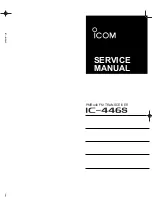
7
3.0 Electrical installation
To access the electrical connections, turn the screws on the top of the case counter clockwise
until the hinged cover can be flipped up. The screws are captured and secured in the cover.
Wiring is through the 1/2” conduit openings and PG fittings in the case of remote sensors with
cable option. Both current and voltage outputs are reverse wiring protected.
Note:
The Zero terminals, connected to digital output, provide a contact closure relay for
automatic reset to zero pressure by the monitoring system.
CAUTION: ZERO input is for dry
contact, do no apply voltage to ZERO Terminals
3.1 Electrical termination
Wiring: 2-Wire - 4 to 20 mA (Current Output) and Remote Zero
Model 231RS when configured as a current output transducer is a true 2-wire, 4-20 mA
current output device and delivers rated current into any external load of 0-250 ohms.
When configured as a 4-20 mA current output device the current flow is in one direction only.
PLEASE OBSERVE POLARITY. WARNING: Damage may result on the unit if AC power is
applied when the output switch is configured in position “A” (4-20).
We suggest that an electrical cable shield be connected to the system’s loop circuit ground to
improve electrical noise isolation.
Min. Supply Voltage:
15 + .02 x (Resistance of receiver plus line)
Max. Supply Voltage:
30 + .004 x (Resistance of receiver plus line)
The optional remote zero is a normally open relay wired between COM and REMOTE ZERO
terminals. In order to initiate ZERO function the relay contact should be closed and sensor
must be vented to atmosphere.
Figure 4


































